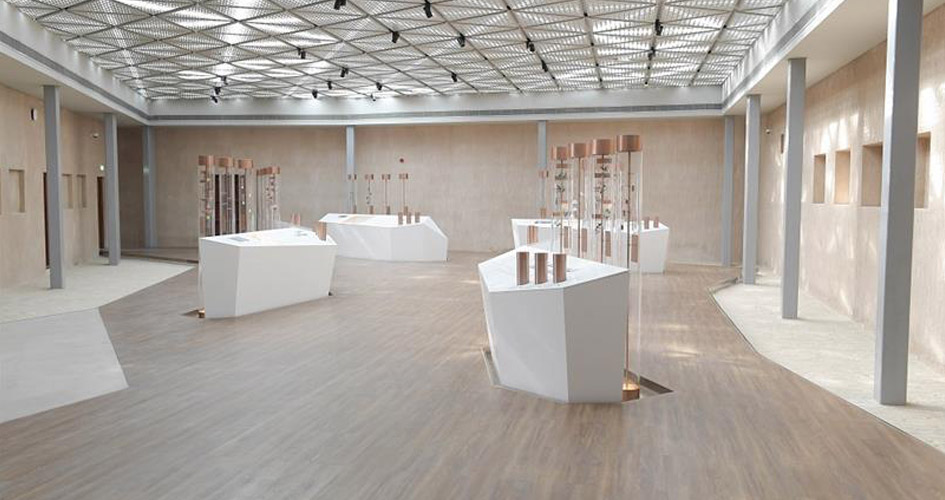Most museums preserve and record the history of the coming generations. There are great opportunities for anyone who wishes to learn about Dubai’s history and traditions. Although not located in major geographical regions, human settlements centered around Creek thousands of years ago. This shows us that Dubai has a significant history that should be explored. So, visiting museums should be on the list of things you do in Dubai.
Apart from those museums that talk about history, other museums specialize in their niches. Here is a list of the ten best museums in Dubai ranked from 10 to 1 to cover your visit to Dubai. If you take an exclusive Dubai city tour, your guide will briefly describe Dubai’s history. Before you start reading, there is a caveat. These rankings are purely subjective and are based on the author’s point of view. You may like one of them that we ranked lower better than the one that we ranked higher. And that’s OK. If you have already visited any of these, tell us which one you liked the most in the comments.
10. Naif Museum Dubai
This one offers free entry to all. However, unlike other heritage museums in Dubai, the Naif Museum is on the Deira side of the Creek, in the old Naif Fort building built in 1939. This was also the first-ever police station in Dubai. In 1997, Sheikh Muhammad Al Maktoum ordered a wing of this building to be converted into a museum. Today, Naif Museum showcases the history and evolution of police and security services in Dubai.
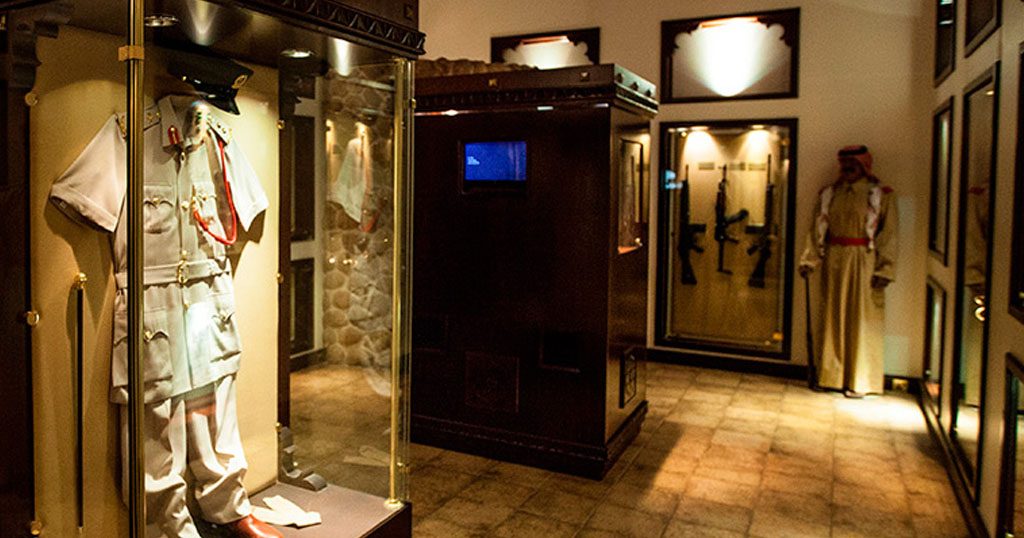
When you visit the museum, remember that Dubai’s security service is among the best in the world. Therefore, this museum is an ode to its humble beginnings. It provides insight into how Dubai became a forerunner in keeping law and order. The museum also offers a free guided tour.
There is a display of the changes the Dubai police uniform underwent over the decades, along with different types of weapons used by the police in the early days. You can see the old detention rooms and essential documents and decrees related to the police.
Our recommendation: It is fascinating to see how the Dubai police have changed in a century. Visit this place if you happen to be nearby.
- Location: Naif, Deira
- Entry fee: Free
- Opening hours: Sunday through Thursday, from 8:00 AM until 2:00 PM
- Suggested visit duration: 1 hour
9. Coins Museum
Like many other historical museums in Dubai, the Coins Museum is also located in the historical neighborhood of Bur Dubai. Although small, this one offers much information and is free to enter. About 470 coins are displayed with touch screens that provide all their data.
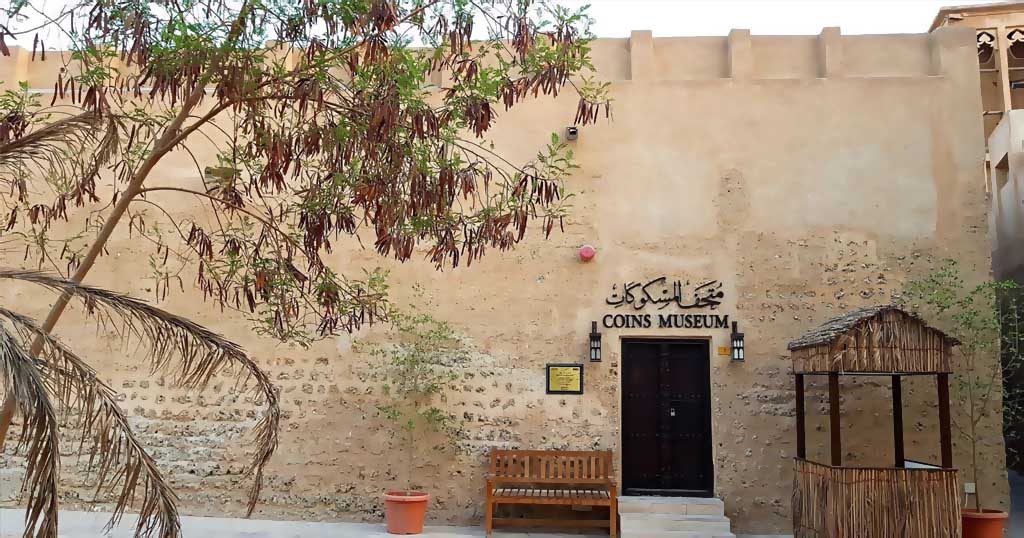
The Coins Museum opened in 2004. The museum selected one of the old two-story buildings near the Ruler’s Dewan in the historic neighborhood. Because of coral stones and plaster construction, all the buildings in this heritage site have a similar mud-colored look.
The museum has eight rooms, each with a different theme. The first one curates the history of coinage. The rest have coins dedicated to different eras and geographical regions, from the Rashidun Caliphate to the Umayyad, Abbasid, and other Islamic civilizations. There are also coins from Egypt, Turkey, North Africa, Islamic Spain, and the United Arab Emirates.
Our recommendation: This museum is interesting to visit even if you are not a numismatologist. Also, considering it is free to enter, you must add it to your itinerary among other museums.
- Location: Al Fahidi Historical Neighborhood
- Entry fee: Free
- Opening hours: Sunday through Thursday from 8:30 AM to 3:30 PM
- Suggested visit duration: 1 hour
8. History of the Cinema Museum
Only a few museums on earth are dedicated to cinema history and development. The History of Cinema Museum in Dubai depicts the history of moving pictures, which surprisingly began more than 30,000 years ago when prehistoric people tried recreating movements with shadows. That’s what even modern movies are doing, playing moves and telling stories with shadows. But it has only gotten more and more sophisticated over time.
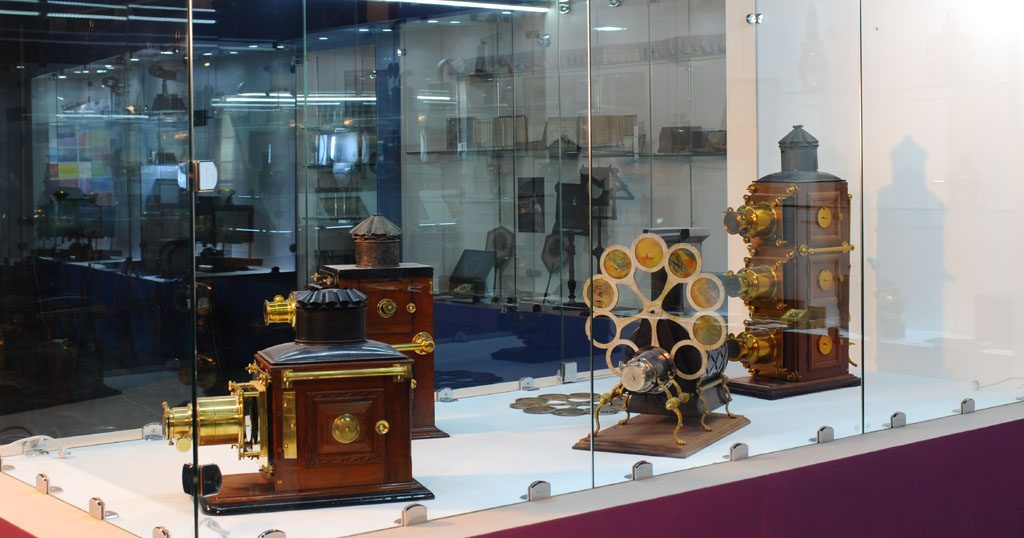
The relics housed in the museum are the personal collection of the Arab businessman Akram Miknas. Unlike regular museums, the History of Cinema Museum is on the first floor of a typical office building. You will comprehensively examine cinema history and the tools and equipment used in different periods to capture and recreate images. The original items in its collection date back to the early eighteenth century.
Visitors can not only view the collection but also interact with it. They can look into the peep show boxes and turn the reels of the projectors from antiquity. They can see life-like pictures through stereoscopes used in the early days of 3D imagery. There is also a gift shop in the museum where they can buy movie memorabilia and other souvenirs related to filmmaking.
Our recommendation: The History of Cinema Museum opened only a few years ago and hasn’t started to attract a crowd yet. But a visit here will be informative to anyone, including the kids. If you are interested in the art of movies, add it to your bucket list.
- Location: 1st Floor, MCN Hive Building, Al Barsha
- Entry fee:
- Adults: 30 AED
- University students: 25 AED
- Children and high school students: 20 AED
- Opening hours: Saturday through Thursday from 9:00 AM – 6:00 PM
- Suggested visit duration: 2 hours
7. Coffee Museum
Arabs have had a long relationship with coffee. They are said to have been the first to use coffee as a recreational drink and to have carried the coffee culture to the rest of the world. The word coffee itself has its roots in the Arabic word Kava.
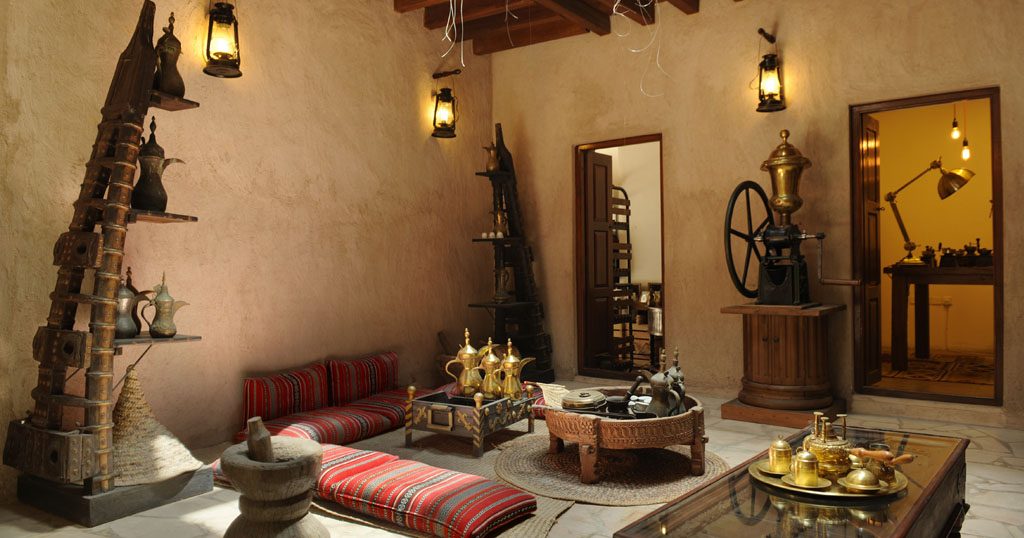
The Coffee Museum, located in one of the many heritage houses in the Al Fahidi historical neighborhood, tells the tale of love between Arabs and coffee. Space inside the elaborately decorated rooms is dedicated to the ancient artifacts of coffee brewing and drinking. You can see the old rotating rosters, pots, and grinders.
There are audio and visual presentations about coffee and the legends about its origin. You can even try different varieties of coffee, including Arabic, Ethiopian, and Japanese brews. Vintage coffee adverts in German adorn the walls.
The Coffee Museum in Dubai is one of the few museums dedicated to coffee culture. It also has a small library with many historical texts related to coffee, like Johann Friedrich Von Pfeiffer’s encyclopedia, which has over 170 pages about coffee.
Our recommendation: The Coffee museum is small but exciting. It is worth a visit to learn more about coffee and have a cup.
- Location: Al Fahidi Historical Neighborhood, Bur Dubai
- Entry fee: 10 Dhs
- Opening hours: Saturday through Thursday – 9:00 AM to 5:00 PM
- Suggested visit duration: 1 hour
6. Saruq al Hadid Museum
This one is a trip back in time—a long, long time to the Iron Age. Considered one of the richest historical sites in the Arabian peninsula, the Saruq al Hadid archeological excavation site is in the southern region of Dubai, in the Rub Al Khali desert.
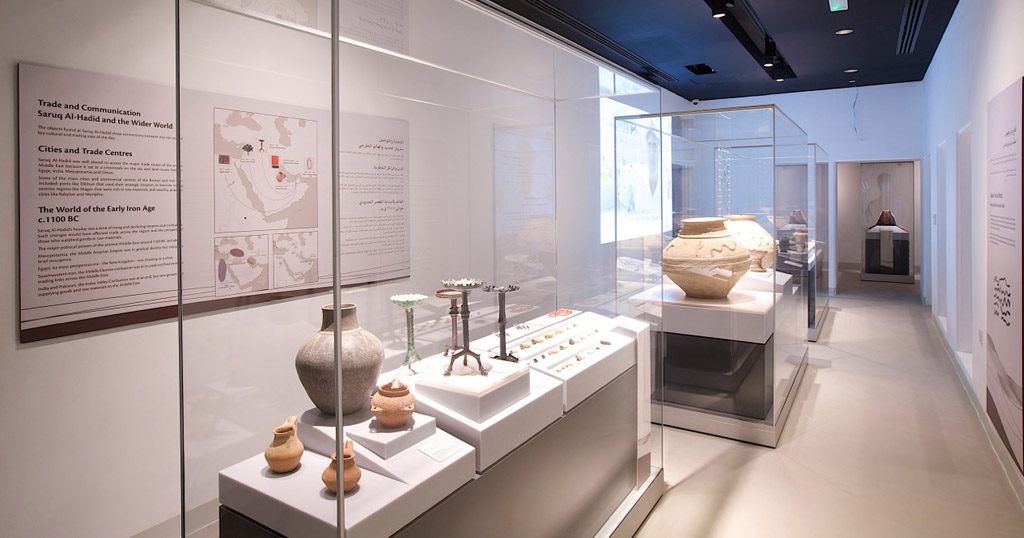
The ruler of Dubai discovered this location in 2002 while flying over the desert. He noticed a particular patch of sand that was darker than its surroundings. However, the artifacts are showcased in another, more accessible city. The Saruq al Hadid Museum is on the banks of Dubai Creek, nestled between many other historical buildings. It is inside an old house belonging to Sheikh Juma Bin Maktoum Al Maktoum.
Unlike most of us, the history of human settlement in Dubai goes back thousands of years. This museum displays human life in this desolate desert from the third millennium BCE.
The Saruq al Hadid Museum uses cutting-edge technologies to narrate the past. There are immersive and informative video and audio presentations. Apart from the galleries, the museum lets everyone experience hands-on archeology. You can roll up your sleeves and dig up artifacts out of dirt from the simulated excavation site. Children will love this a lot.
Numerous things are still being unearthed. Therefore, the museum’s display is reorganized every three months to present the latest discoveries.
Our recommendation: This museum is a rare gem. It is the only museum in Dubai where you can dive deep into the city’s ancient history.
- Location: Shindagha, Bur Dubai
- Entry fee:
- Adult: 20 Dhs
- Adults over 60: Free
- Children 7 – 12 years: 10 Dhs
- Children up to 6 years: free
- Opening hours:
- Saturday through Thursday, 8:00 AM – 8:00 PM
- Friday: 4:00 PM – 8:00 PM
- Suggested visit duration: 2-3 hours
5. Dubai Museum
It is the oldest museum in Dubai. Sandwiched between the busy shops and streets in Bur Dubai, this museum looks unremarkable. But you will notice it for the large model of a wooden dhow displayed on top of it and the cannons placed next to the entrance.
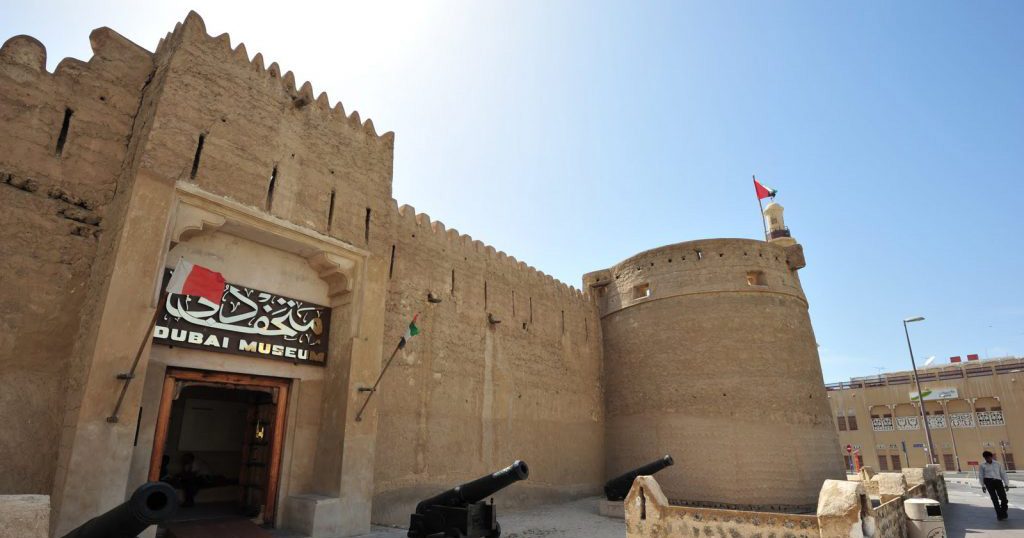
Built in the late 18th century, this fort was initially used to protect the town from foreign attacks. Three watchtowers flank the top of the defense. This fort functioned as the ruler’s residence until 1896 and later as a prison. In 1971, it was converted into a museum to showcase the history and traditions of Dubai.
The museum’s entry fee is nominal; you can almost count it as free. When you get a ticket and enter inside, a modest courtyard welcomes you. Some old canons, a boat, and an Arish are here. Arish, the houses built with palm leaves and tree trunks, were used by ordinary men. A few galleries from the courtyard display old weapons and tools used by the Arabs.
However, the main parts of the museum are located two floors underground. A spiraling ramp takes you to the underground galleries. The key attractions of these galleries are the dioramas. These life-size dioramas take you through the daily lives of Arabs before the oil boom. There are depictions of marketplaces and typical Arab houses. The diorama of the pearl diver is well done. You can see him diving; his only equipment is the nose clip to prevent water from getting in the nose, a leather glove, and a rope tied around his ankle to pull him back from the water. The use of light and sound makes the experience even more enhanced.
There is a section solely dedicated to archeological findings. Human remains and tools used around 4000 years ago by the ancient civilization in the region are preserved here. In another part of the museum, there is a display of historical government documents that became significant milestones in Dubai’s history.
Our recommendation: This is an average museum without many surprises. But it is still good for a casual visit.
- Location: Al Fahidi Street, Bur Dubai
- Entry fee: 3 Dhs
- Opening hours:
- Saturday through Thursday – 8:30 AM to 8:30 PM.
- Friday – 2:30 PM to 8:30 PM
- Suggested visit duration: 2 – 3 hours
4. Pearl Dubai Museum
Dubai was the land of pearls and gold. While it became known as a gold trading hub, pearl diving was also its forte. Arabian pearls were fabled all over the world. But, as artificial pearls and modern equipment took over, pearl diving as a trade died out.
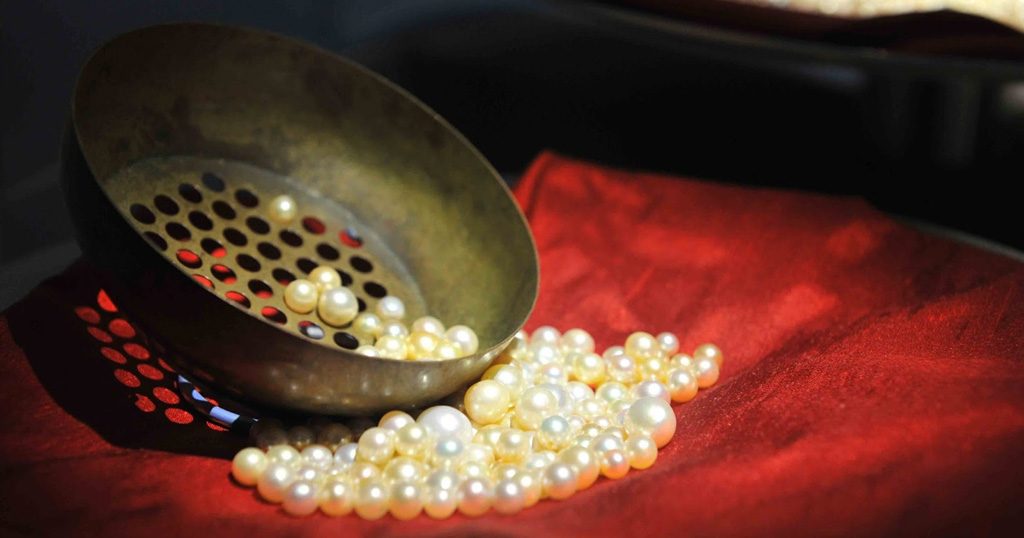
Today, located in the National Bank of Dubai headquarters in Deira, it is the largest repository of the world’s most delicate pearls. The museum shows the equipment used for pearl diving in those days, from dhows to diver’s gear. It also provides an informative presentation of the different pearl beds in the shallow waters and the kinds of oysters that populated them.
Experienced pearl divers knew the locations where they could dive for each variety of pearls, and they would rotate these pearl beds between harvests to allow the species to thrive. This shows how those early men were wise enough to avoid the ruthless exploitation of natural resources.
The Pearl Museum gives extensive information about the pearls. Pearls are priced based on color, luster, shape, weight, and size. The advantage of pearls over other precious stones is that they can be used as they are found. There is no need for any cutting and shaping. But in the days of yore, besides being used as jewelry, pearls were also a form of currency in Dubai. In those days, a pearl diver had to begin training at the young age of ten.
The museum’s main gallery houses a collection of pearls in different shapes and hues protected by a high-security glass window. The pearls are displayed beneath bright lights that fill the rooms with rainbow hues. The museum also exhibits ancient coins.
The late Sultan Ali Al Owais, the son of Ali Bin Abdullah Al Owais, donated his private pearl collection for public viewing. His father was a wealthy pearl trader from the Al Shamsi tribe in Sharjah.
Our recommendation: Nowhere else can you see such a vast collection and variety of pearls.
- Location: Emirates NBD Headquarters, Deira
- Opening hours: Every day from 9:00 AM to 5:00 PM
- Suggested visit duration: 1 hour
3. Etihad Museum
This is about the country’s more recent past. The Etihad Museum is an icon of modern architecture. Rather than portraying things from the ancient past, the Etihad Museum focuses on the period after the oil boom, especially between 1968 and 1974 and the formation of the United Arab Emirates. The Arabic word ‘Etihad’ means ‘Union.’
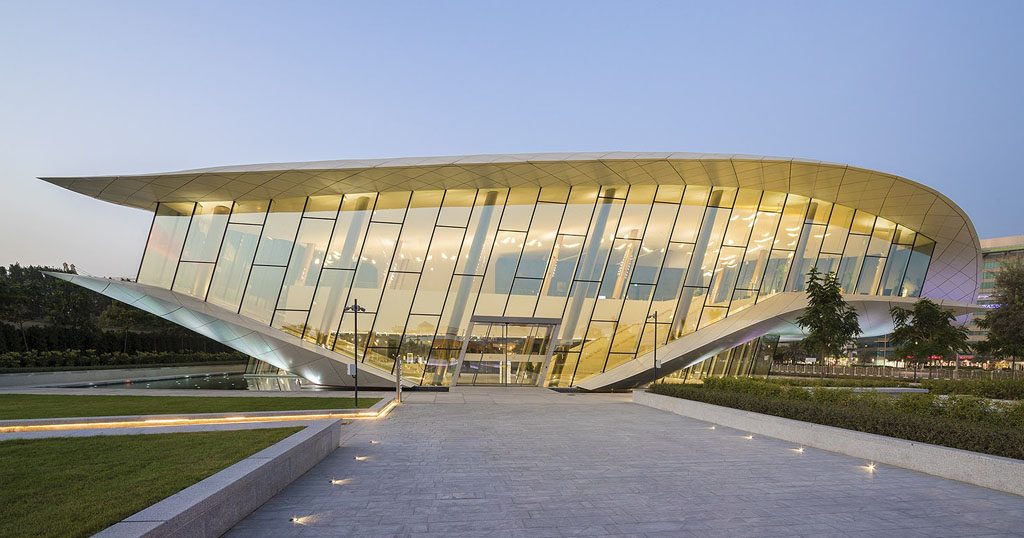
Etihad Museum takes you on a journey through the country’s modern history through photographs, documentaries, and artifacts. The museum is in Jumeirah, next to The Union House, where the constitution was signed. Anyone can visit the Union House for free.
Passports and personal belongings of the founding fathers and an interactive touch screen with their family tree many generations back are attractive. An Emirati artist has a huge painting of the UAE’s political geography. The seven golden pillars in the main hall denote the pens used to sign the agreement and the curved white roof, the paper on which it was signed. A library with more than three thousand titles, a beautiful garden, and a cafe are also part of the museum.
Our recommendation: This is a place of great importance in the history of the modern UAE. This museum is different from every other museum in style and content.
- Location: Jumeirah Street
- Entry fee:
- Adults: 25 AED
- Students: 10 AED
- People of Determination: Free
- Children: Free
- Opening hours: Daily: 10:00 AM – 08:00 PM
- Suggested visit duration: 2 – 3 hours
2. Museum of Illusions
This is an entirely different kind of museum. Museum of Illusions in Bur Dubai Al Seef near the Creek is a world of mind-blowing optical illusions. The Museum of Illusions in Dubai is one of the many museums in the world-renowned museum chain with the same name. The one in Dubai, the biggest of all others, houses over 80 tricks and illusions to puzzle your brain. Children are going to love it the most.
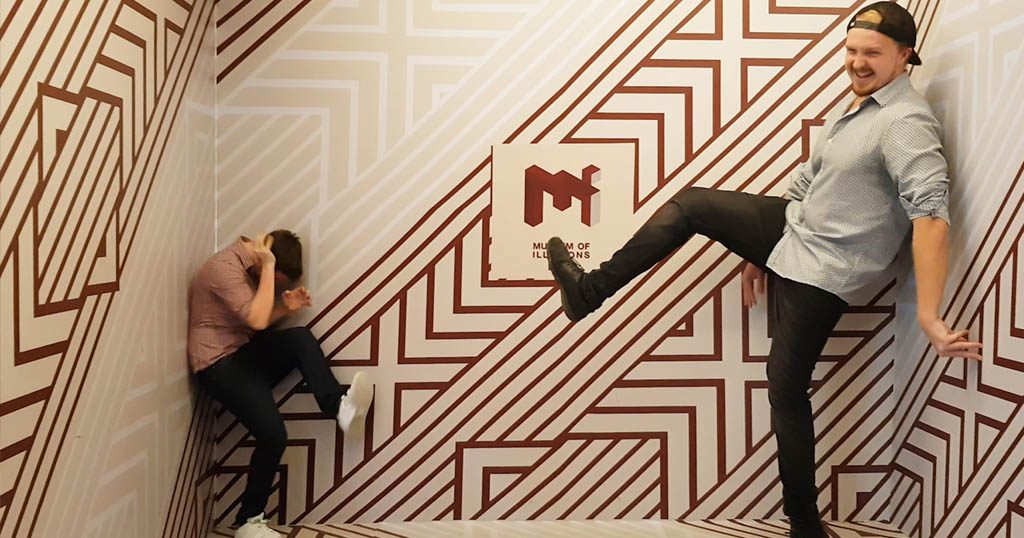
The main attractions in this museum are the Ames Room, the Slanted Room, and the Vortex Tunnel. You can look bigger or smaller than your friend in the Ames Room and defy gravity in the Slanting Room. The vortex tunnel deceives your mind with visual effects, making you think that the platform you are standing on is moving while standing still.
You will have so many Instagram-worthy spots here. Almost all of them are going to be exciting. You can add your bit of creativity to the mix and make it even more entertaining. They will also provide you with a scientific explanation for the illusion, which is also going to be educational for the younger ones.
Our recommendation: It offers a great combination of entertainment and information. It is a must-visit place if you have kids with you or even with your friends. Remember that there will be many moments for pictures, so don’t forget to take your camera with you.
- Location: Al Seef, Bur Dubai
- Entry fee:
- Adults: 80 Dhs
- Children: 55 Dhs
- Students & senior citizens: 65 Dhs
- Opening hours:
- Sunday to Wednesday from 10:00 AM to 10:00 PM
- Thursday to Saturday from 10:00 AM to 12:00 AM
- Suggested visit duration: 1 hour
1. Al Shindagha Museum
Dubai has added yet another attraction to the historic banks of the Creek. The Shindagha Museum, which opened in 2019, is part of changing the face of old Dubai. Right now, only the first phase of the museum is completed. Once the Dubai Historical Neighborhood project is finished, it will become a cluster of 23 galleries. The Perfume house was the first one to open among these.
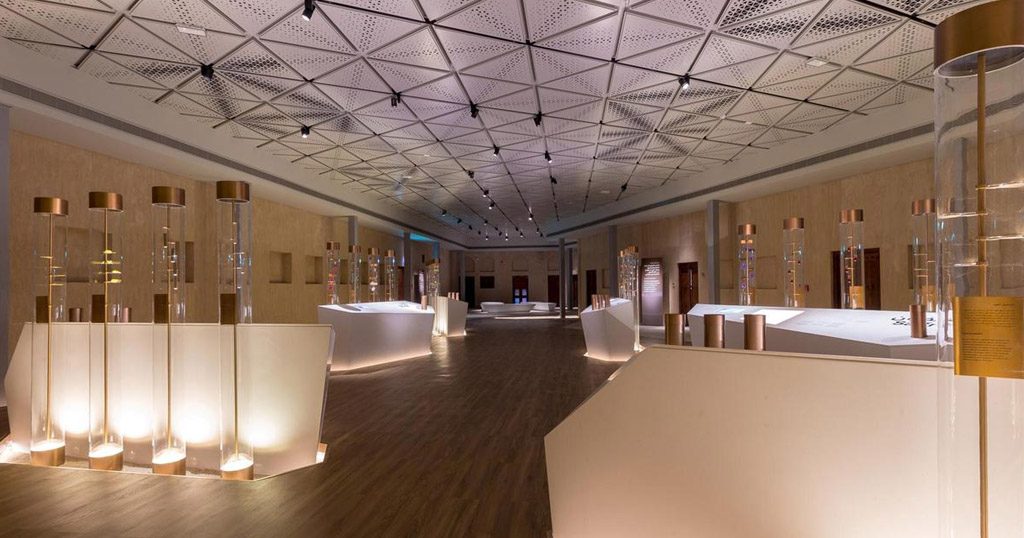
The Shindaga Museum is next to the House of Sheikh Saeed Ibn Al Maktoum. The museum is in the old house of Sheikha Shaikha Bint Saeed Bin Maktoum, a skilled perfumer. The display in the museum includes a massive 28 Kg piece of Oud that belonged to her.
‘Windows of Dubai’ is another part of the Shindagha Museum that offers glimpses into the past and future of Dubai’s growth. State-of-the-art technologies and augmented reality provide tourists with a different experience.
The Shindagha Museum has many exhibition houses. ‘Governance and Society’ shows the growth of Dubai’s modern landscape and its ruling family. Another gallery, ‘Creativity and Wellbeing,’ explains traditional arts, crafts, and medicine. Two more galleries are ‘Living off the Land and Sea’ and a ‘Children’s Pavilion.’
Our recommendation: This is a must-visit museum in Dubai. Plan your schedule to include this museum in your itinerary. It is like a much-updated version of the Best museums in Dubai, with modern design and better everything.
- Location: Al Shindagha, Bur Dubai
- Entry fee: 15 Dhs
- Opening hours:
- Open from Saturday to Thursday from 10:00 AM to 6:00 PM (Except on Tuesdays when the museum is closed)
- Friday: 2:30 PM to 9:00 PM
- Suggested visit duration: 3 – 4 hours

